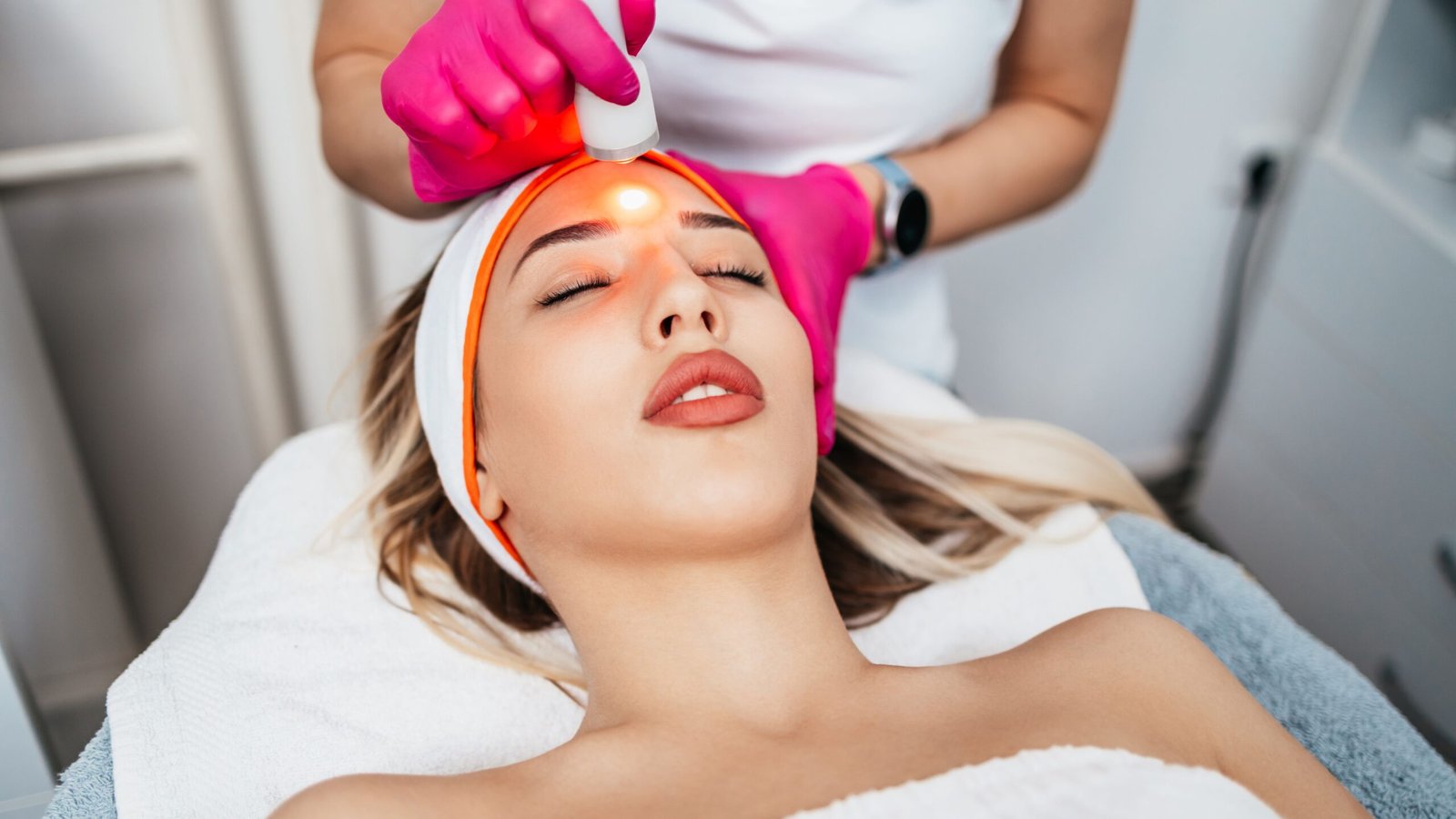Rhinoplast Surgery, commonly known as a nose job, is a popular cosmetic procedure aimed at enhancing the appearance and functionality of the nose. Whether you’re undergoing rhinoplasty for aesthetic reasons or to correct a structural issue such as a deviated septum, it’s crucial to understand the process thoroughly. Knowing what to expect before, during, and after rhinoplasty surgery can help you mentally prepare and ensure a smooth recovery. In this article, we will break down the entire Rhinoplasty(تجميل الأنف) process, highlighting important details and offering tips for a successful outcome.
Understanding Rhinoplasty:
Rhinoplasty is a surgical procedure designed to reshape the nose. It can be performed for both cosmetic and medical reasons, such as improving breathing or correcting birth defects or trauma. During rhinoplasty, the surgeon makes strategic incisions either inside the nostrils or across the base of the nose to access the bone and cartilage. The surgeon then modifies these structures to achieve the desired shape and function.
Before undergoing rhinoplasty, it is essential to have a clear understanding of the expected outcomes, recovery times, and potential complications. This knowledge will help set realistic expectations and ensure that you make informed decisions throughout the process.
What to Expect Before Rhinoplasty Surgery?
Before undergoing rhinoplasty surgery, there are several key steps to ensure the procedure goes smoothly. Preparing both physically and mentally is crucial for a successful outcome.
Consultation with a Surgeon:
The first step in preparing for rhinoplasty is scheduling a consultation with a board-certified surgeon. During this consultation, the surgeon will:
- Assess your medical history and overall health.
- Discuss your goals and expectations for the procedure.
- Examine your nose structure and facial features.
- Take photographs of your nose for preoperative planning.
- Explain the surgical options available, including the incision technique (closed or open rhinoplasty).
Pre-Surgery Guidelines:
Your surgeon will provide a list of instructions to follow in the days leading up to the surgery. These may include:
- Avoiding smoking: Smoking can interfere with the healing process and increase the risk of complications.
- Stopping certain medications: Blood thinners and certain supplements may need to be paused to minimize bleeding.
- Fasting before surgery: You will likely need to fast for at least 8 hours before your surgery, especially if it’s done under general anesthesia.
- Arranging post-surgery transportation: You will not be able to drive after surgery, so arrange for a responsible person to take you home.
Psychological Preparation:
Rhinoplasty can be a life-changing procedure, so emotional and mental preparation is equally important. It’s essential to:
- Have realistic expectations: Understand that the results may not be immediately visible and that healing can take time.
- Understand the risks: Every surgical procedure comes with potential risks, such as infection, scarring, or dissatisfaction with results.
- Discuss concerns openly: Make sure to communicate any anxieties or concerns with your surgeon so that they can guide you through the process.
What to Expect During Rhinoplasty Surgery?
On the day of the surgery, the procedure will typically take between 1 to 3 hours, depending on the complexity of the surgery. It is usually performed under general anesthesia or local anesthesia with sedation, ensuring that you remain comfortable and pain-free.
The Surgical Procedure:
The steps of the rhinoplasty procedure may vary depending on the goals of the surgery. Here’s what typically happens:
- Incisions: For closed rhinoplasty, all incisions are made inside the nostrils, which minimizes external scarring. For open rhinoplasty, an additional small incision is made across the columella (the tissue between the nostrils).
- Reshaping the Nose: Once the incisions are made, the surgeon will work on the underlying bone and cartilage. This may involve removing, adding, or reshaping tissue to achieve the desired result.
- Correcting the Septum: If you are having rhinoplasty to improve breathing, the surgeon may also straighten the septum or reduce turbinate size.
The Anesthesia:
The type of anesthesia used will depend on your specific case and surgeon’s recommendation.
- General Anesthesia: Most rhinoplasty surgeries are performed under general anesthesia, meaning you will be completely asleep during the procedure.
- Local Anesthesia with Sedation: In some cases, local anesthesia with sedation may be used, allowing you to remain relaxed while the procedure is done.
After the surgery, you will be taken to a recovery room where medical staff will monitor you as you wake up from anesthesia. You will be given instructions for post-operative care before you are allowed to go home.
What to Expect After Rhinoplasty Surgery?
Following Rhinoplasty surgery, proper care and a bit of patience are crucial for optimal recovery. Although the recovery process varies from person to person, there are some general things to expect.
Immediate Aftercare:
- Swelling and Bruising: It’s common to experience swelling and bruising around the eyes and nose for the first few days to weeks.
- Nasal Splints or Packing: In some cases, a nasal splint may be placed to help the nose maintain its new shape during the initial healing period. Some patients may also have nasal packing to control bleeding.
- Pain and Discomfort: Mild pain or discomfort is expected, but your surgeon will prescribe pain relief medication to manage it.
Recovery Timeline:
- First Week: The first week will be the most challenging, with significant swelling and bruising. You should avoid any strenuous activities, including bending over, heavy lifting, or exercising.
- Two to Four Weeks: Swelling will begin to subside, but the nose may still feel tender. You should continue avoiding activities that could cause injury to the nose.
- Three to Six Months: Most of the swelling will subside, and the final shape of the nose will start to become apparent.
- One Year: Full healing can take up to a year, during which time subtle changes in the shape of the nose may continue to occur.
Tips for a Smooth Recovery:
- Follow your surgeon’s instructions regarding medications, wound care, and activity restrictions.
- Keep your head elevated to reduce swelling.
- Avoid blowing your nose or engaging in any activities that may stress the nose.
- Attend follow-up appointments to ensure that the healing process is progressing as expected.
Key Benefits and Risks of Rhinoplasty:
| Aspect | Benefits | Risks/Side Effects |
|---|---|---|
| Aesthetic Improvement | Enhances facial symmetry, boosts self-confidence | Dissatisfaction with results, uneven appearance |
| Functional Improvement | Improves breathing, corrects a deviated septum | Nasal obstruction, difficulty breathing post-op |
| Minimally Invasive | Small incisions, minimal scarring | Infection, scarring, tissue damage |
| Long-lasting Results | Permanent results, lasting nose shape | Swelling, bruising, possible revision surgery |
| Improved Proportions | Creates balance with other facial features | Risk of complications from anesthesia |
Commonly Asked Questions:
How long will I need to take off work after rhinoplasty?
Most people take about 7-10 days off from work, depending on the nature of their job and how quickly they heal.
Will rhinoplasty leave visible scars?
For closed rhinoplasty, scars are internal and not visible. Open rhinoplasty may leave a small, discreet scar under the nose.
Is rhinoplasty a painful procedure?
Most patients experience mild discomfort, but pain can usually be managed with prescribed medication.
When will I see the final results of my rhinoplasty?
It can take up to a year to see the final results, although initial changes are visible after a few months.
Are there any age restrictions for rhinoplasty surgery?
Rhinoplasty can be performed after the nose has fully developed, which is typically around the age of 16 for females and 18 for males.
Conclusion:
Rhinoplasty is a transformative procedure that can significantly improve both the appearance and functionality of the nose. Whether you’re seeking a cosmetic enhancement or addressing medical concerns, understanding what to expect before, during, and after rhinoplasty is essential for a successful experience. Proper preparation, realistic expectations, and diligent post-operative care are crucial in ensuring that your surgery results in a smoother recovery and long-lasting, satisfying outcomes. Always consult with a board-certified surgeon to make informed decisions and prioritize your health and safety throughout the process.
















Leave a Reply